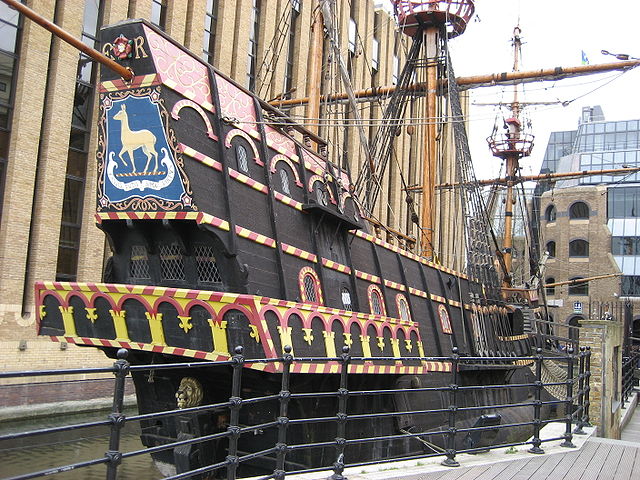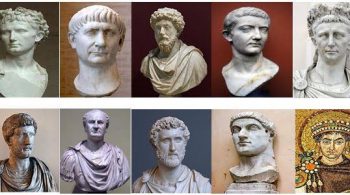From Blackbeard to Captain Kidd, the most famed pirates in history would have been nothing without their terrifying warships. Pirate ships were undoubtedly the most essential equipment in a pirate’s armory. These ships were often seized, stripped naked for speed, and outfitted with several cannons.
Pirate ships were employed for some absolutely unfathomable acts of robbery, brutality, and betrayal. This happened during the Golden Age of Piracy (1650s-1730s), and indeed throughout history. In this article, we are talking about these ships. So, keep reading to know more about it.
Ships of the golden age of piracy
Pirate ships Queen anne’s revenge
Without a question, Blackbeard’s flagship, Queen Anne’s Revenge, is the most popular pirate ship of all time. Captain Benjamin Hornigold seized a 300-ton ship, previously named Concord, in the eastern Caribbean in November 1717. Captain took this ship from French merchants. Also, this ship carried 26 cannons. Hornigold handed this ship to Blackbeard, his first mate, who christened it “The Queen Anne’s Revenge”. The upgraded pirate ship held 150 pirates and 40 cannons. Blackbeard performed his legendary act with The Queen Anne’s Revenge, when he blocked Charleston and seized eight important vessels. The Queen Anne’s Revenge was also popular for defeating the strong cruiser HMS “Scarborough” in sea combat. In 1718, the ship sank in Beaufort, North Carolina.
People discovered this ship in late 1996 on the shoals of the Beaufort Inlet near Beaufort, North Carolina. Researchers have been attempting to determine whether this is the real legendary ship or something else.
Pirate ships Captain William Kidd’s Adventure Galley
The Adventure Galley, a specifically crafted galley-warship weighing over 284 tonnes. This ship had 34 outfitted guns and a crew of 100 skilled sailors. The King’s commanders sent the ship to legendary pirate Captain Kidd. They send it to him for raids on pirates and French East India Company ships in the Eastern Seas. This pirate ship’s most notable maritime victory was in January 1698 against an Armenian ship, the Quedagh Merchant. This was a treasure ship belonging to the British East India Company.
Following the fight, Captain Kidd replaced The Adventure Galley as his flagship with Quedah. He abandoned The Adventure Galley, ordering that she be burned because she was already rotting.
Fancy – Henry Every
Every was a middle-aged mate aboard the formidable privateer ship Charles II. Every planned mutiny was chosen as Charles II’s new pirate leader while they were docked at La Coruna in 1694. He christened the ship “Fancy” and made adjustments. Fancy possessed 46 cannons, 140 crew men, and was one of the quickest ships at the time. He began two years of successful looting around the Indian Ocean with this ship, seizing every vessel in sight and expanding his nasty name across the seas. This ship’s most notable win came against the 40-gun Great Moguls flagship, Ganj-i-Sawai.
The legendary Golden Hind (The Pelican)
Sir Francis Drake’s Golden Hind was one of the most famous ships in sailing history. This ship made a historic and adventurous journey around the world, and it was the only vessel to return from that trip. The Golden Hind was a galleon that weighed around 100 tonnes and was mounted with 18 cannons of various sizes. This flagship was originally called the Pelican, but Drake renamed her the “Golden Hind” on a cruise in 1577 after losing two ships. The trip to The Golden Hind lasted 2 years, 10 months, and 18 days. Many ships in popular culture bear the name and have ties with The Golden Hind.
Whydah
Whydah, also known as the Whydah Galley, was the famed ship of pirate Sam ‘Black Sam’ Bellamy. Whydah, a former British warship designed to carry enslaved persons. Bellamy captured them in February 1717 and turned into a pirate ship.
Though deadly in her heyday and armed with 28 guns, Whydah only served as a pirate ship for about 2 months, robbing and stealing around the Atlantic Ocean’s commercial lanes. She was lost in a catastrophic storm on Cape Cod in the northeastern United States in April 1717. Only two of the ship’s 146 crew members survived.
 In 1984, people discovered the wreck of the Whydah. They have recovered approximately 100,000 antiquities and artifacts from the underwater archaeological site since then.
In 1984, people discovered the wreck of the Whydah. They have recovered approximately 100,000 antiquities and artifacts from the underwater archaeological site since then.
Lowther’s delivery
When the Gambia Castle, a mid-sized English Man of War, departed for Africa in 1721, George Lowther was a second mate. The Gambia Castle was transporting a garrison to an African coast stronghold. When the soldiers arrived, they discovered that their quarters and rations were deplorable. Lowther had fallen out of favor with the commander and had persuaded the disgruntled troops to assist him in the mutiny. They seized control of the Gambia Castle, renamed it Delivery, and went out to engage in piracy. Lowther had a long pirate career and finally exchanged the Delivery for a more seaworthy ship. Lowther died after becoming stranded on a desert island after his ship was lost.
Pirate ships from the golden age varieties
Sloops
Sloops were the most popular choice for sailing across the Caribbean and crossing the Atlantic during the Golden Age of Piracy in the 16th and 17th centuries. These were regularly constructed in the Caribbean and were easily adaptable for pirate activities. A large bowsprit also meant more canvas area, which improved maneuverability. The sloops had the advantage of being speedy and able to attack quickly and escape quickly, with a peak speed of more than 10 knots. Because of its shallow draught, it could also hide in shallow seas to elude warships.
Schooners
The two-masted schooner was another favorite of Caribbean and Atlantic pirates. This boat, like the sloop, was swift, maneuverable, and had a great capacity for weapons and cannons. Because of its thinner hull and even shorter draught, it could readily hide in shallow estuaries and avoid its adversaries. The disadvantage was that it couldn’t carry as much booty or crew.
Brigantines
The brigantine, another shallow-draft boat, was popular in the Mediterranean due to its agility and speed. Oars, also included in certain designs that could be used in light breezes. With its huge storage and powerful weapons, this type of boat was used for protracted conflicts aimed at enormous loot. Could also handle more than 100 guys.
Ships with Square Rigging
These were mostly trade ships, distinguished by their enormous square sails and three masts. Because of the enormous hold, they were sluggish yet ideal for extended crossings. Pirates were unlikely to pick a square-rigged ship as their first option, but it was ideal for stealing enormous amounts of plunder. We can see these types of ships in a pirate fleet in the book.
The Fleur from the Netherlands
People mainly used this ship to transport big volumes of goods. This was a flat-bottomed, large, and robust ship that weighed more than 300 tonnes and was not particularly fast. Pirates would have plenty of room to outfit this ship with cannons and cannons, but many would rather take its cargo and flee.
Galleons
The galleon, a Spanish design, combined the necessity to carry cargo. But, it was still able to defend itself with guns. A galleon, with over 70 cannons and weapons, could support a crew of nearly 200 people. However, its difficult maneuverability and poor speed due to its big square sails made it an easy target for pirates.
Pirate ships from the golden age of piracy history
Pirates frequently depicted in literature and films sailing gigantic galleon-style ships. But the reality during the Golden Age was quite different. The great majority of pirates chose sloops, which were swift, maneuverable, and capable of navigating through shallows where larger navy ships could not. Furthermore, pirates usually went after easier targets like merchant ships equipped with only a few guns. However, there were some significant outliers, since some pirates chose a bigger ship capable of matching the firepower of a lower-rated navy warship. Prestige was also important, and it is worth noting that the most infamous and successful pirates did own the biggest ships.

Captain Kidd piloted the specially designed Adventure Galley. This was a 287-ton three-masted ship that could follow a target in any weather because of its combination of square-rigged sails, lateen sails (triangular), and oar banks (46 in total). More than 150 sailors manned The Adventure Galley. Also, it had 34 guns. In 1720, Edward England seized a magnificent ship off the coast of Madagascar and called it the Fancy. This ship also had 34 guns and a crew of about 180 men.
Others
Blackbeard’s Queen Anne’s Revenge, another seized vessel, this time a French slaver, is perhaps the most renowned of pirate ships. The Queen Anne’s Revenge required at least 300 men to man the 40 guns on board. Bartholomew Roberts’ Royal Fortune was the most formidable pirate ship of the day. The former French cruiser had at least 42 guns, which Roberts exploited by altering her for speed. Also, it became the most successful Golden Age pirate in terms of ships taken, with well over 400 captured.
Pirate ships from the golden age origin
The English journalist George Powell wrote about “what appears to have been the golden period of piracy up to the last decade of the 17th century” in 1894. Powell says that while reading Charles Leslie’s A New and Exact History of Jamaica, which was almost 150 years old at the time. Powell only used the phrase once.
In 1897, historian John Fiske adopted a more systematic usage of the phrase “Golden Age of Pirate,” writing, “At no other time in the world’s history has the business of piracy thrived so enormously as in the seventeenth century and the early part of the eighteenth”.
Its golden era lasted from 1650 until around 1720. “Fiske included Barbary corsairs and East Asian pirates in this “Golden Age,” noting that “as these
Mussulman pirates and those of Eastern Asia, as busily at work in the seventeenth century as at any other time. The age of the buccaneers was the Golden Age of piracy. Pirate historians throughout the early half of the twentieth century used Fiske’s phrase “Golden Age” without necessarily adhering to his beginning and end dates.
Patrick Pringle said in 1951 that “the most prosperous era in the history of pirate… started in the reign of Queen Elizabeth I and concluded in the second decade of the eighteenth century,” which was the most comprehensive description of an age of piracy. [5] This theory directly opposed Fiske’s, who had vehemently rejected that Elizabethan leaders like Drake were pirates.
Pirate ships famous
CSS Alabama
Despite the fact that it was not a warship. The most lethal Confederate raider in history deserves to be featured on this list. The screw sloop-of-war Alabama, built by Liverpool, England’s John Laird Sons and Company, was a noteworthy triumph for the Confederate States of America in 1862.
The ship, which had been renamed Enrica, was transformed to a cruiser and commissioned as CSS Alabama on August 24, 1862. Alabama spent the next two months, led by Captain Raphael Semmes, capturing and sinking ships in the North Atlantic and intercepting grain supplies from the United States bound for Europe.
People designed Alabama for speed and deception. The ship measured 220 feet long and 32 feet wide, with a capacity of 350 tonnes of coal. When Semmes acquired control of another ship, he would hang a Confederate flag instead of his camouflage flag to proclaim his triumph over the enemy.
When it was at its most destructive, Alabama was destroying an average of one Union ship every three days. On June 19, 1864, the Union warship Kearsarge sank off the coast of Normandy.
Rising Sun
The Rising Sun was a pirate ship with 35 cannons that boarded a crew of 135 men led by Captain Christopher Moody. Until Moody opted to start his own, Black Bart led Moody’s previous crew. Captain Frowd’s brigantine with eight guns and a sloop with the same number of guns followed the Rising Sun on her journey in 1718.

During an investigation of Moody’s fleet for evidence of aggressiveness and piracy, one thing happened. Jamaican Governor Archibald Hamilton was persuaded that the notorious ships were employed to reign over the waterways between St. Christophers and Santa Croix. This was where they burnt and destroyed the ships they had successfully seized.
As a result, Hamilton obliged to seek more strong naval warships from England, notably a 40-gun battleship. He did it in order to protect the territory from Captain Moody and the Rising Sun’s terror.
The flying Dutchman
One of the most famous pirate ships is the Flying Dutchman. The Flying Dutchman is a ghost ship to sail eternally in European nautical mythology. When it appears to sailors, it indicates the oncoming approach of disaster. It’s a cursed ship, or you might call it the ghost ship.
According to the most popular story, Captain Vanderdecken jeopardizes his life by promising to round the Cape of Good Hope during a storm. So, someone cursed him to sail around the Cape for the rest of his life. This story inspired Richard Wagner’s opera Der fliegende Holländer (1843). So, he is set in the same world as the story’s protagonist.
Another story has Captain Falkenberg, who spends his whole life patrolling the North Sea, battling the devil for his soul through a dice game. Similarly, the dice-game idea arises in Samuel Taylor Coleridge’s Rime of the Ancient Mariner (1798), in which the mariner sees a phantom ship on which Death and Life in Death play dice to bring him back to life.
We see the Flying Dutchman name in several texts for over two centuries. According to eyewitness claims, it was a ghost ship with full sails. But many people claimed that they saw it sailing through fog or stormy weather.
Other
Many others, however, claimed to have seen the phantom ship making great headway in calm waters, which contradicts the stories of sightings. Many sightings of the phantom ship have been documented near the Cape of Good Hope and the surrounding area since the myth’s beginnings in the 1600s.

All of these sightings occurred during extremely severe weather, as gales slammed against the island’s beaches. According to myth, the ghost ship caught in a storm and appeared to be on the verge of collapsing with rocks. Then, the ship disappeared in the dark. At the end of the day, we may simply label it a myth. However, she is one of the most formidable and feared pirate ships of all time.
Pirate ships real
The effort required to discover lost riches is sometimes worthwhile, as was the case with the Whydah ship. This ship is still the only one in existence with a documented and proven pirate history. Its nautical past is not cheerful, and it has no reputation for doing good, but much of its fascination stems from the man who sailed it: Black Sam Bellamy. The captain had a bad reputation and seemed to go to any length to maximize the amount of riches he possessed (or, in this case, under his ship deck). His wealth, in the form of rare and valuable coins, came from the slave trade, as he sold slaves throughout the Caribbean.
Read Also:Greek God And Goddesses : Greek Mythology, Symbols
Many of them found a measure of freedom in joining his ship’s crew. Black Sam accumulated such a large army on the Whydah by this rule. But they weren’t fully free. He was both admired and dreaded by those who were subject to his will. Also, it included the robbery of 54 other ships.
His rule lasted from the 17th to the 18th century, until the Whydah drowned in 1717, taking with it an estimated 180 pirates and tens of thousands of coins that Black Sam had secreted. When Black Sam stole the ship, it quickly transformed into a genuine pirate ship. Yet, being a pirate in the 18th century was nothing like it’s portrayed in Hollywood. Pirates were ruthless, nasty, and greedy guys who cared about just one thing: treasure.
Some frequently asked questions
What was the most feared pirate ship?
The Queen Anne’s Revenge is the most scary pirate ship. From the late 17th to early 18th centuries, Edward Teach, better known as ‘Blackbeard,’ supervised a terrible reign of piracy over the Caribbean and North America. In November 1717, he captured the French slave ship La Concorde and turned her into a deadly pirate ship.
Was the Black Pearl a real ship?
The Black Pearl, which has arrived for On Stranger Tides, is not a genuine sailing ship. It’s a tall ship built on the hull of another vessel, the Sunset. They used it to serve as a service ship for Gulf of Mexico oil installations.
Was the silent Mary a real ship?
During the Age of Piracy, the Silent Mary was a Spanish Royal Navy galleon that cruised throughout the Caribbean. She was the pride of the Spanish Navy. Its most feared pirate-hunting ship, most famously commanded by Capitán Armando Salazar.
Who is the most famous real pirate?
Blackbeard is the most famous real pirate.
Who was the most successful pirate in the Golden Age?
Black Bart was the most successful pirate in the Golden Age.
Was Jack Sparrow a real pirate?
The character is based on a real-life pirate named John Ward, an English pirate who converted to Islam and became famed for his adventures.
How many female pirates were there?
Anne Bonny, Mary Critchett, and Rachel Wall are three women pirates with ties to the United States. Anne Bonny from Allen & Ginter Cigarettes’ Pirates of the Spanish Main series (N19), 1888.
Who was the most famous female pirate?
At the top of the list is Anne Bonny. She was the most popular female pirate of the Golden Age. She was a member of Calico Jack’s crew, along with Mary Read. According to history, these two ladies fought better than any man on board.





